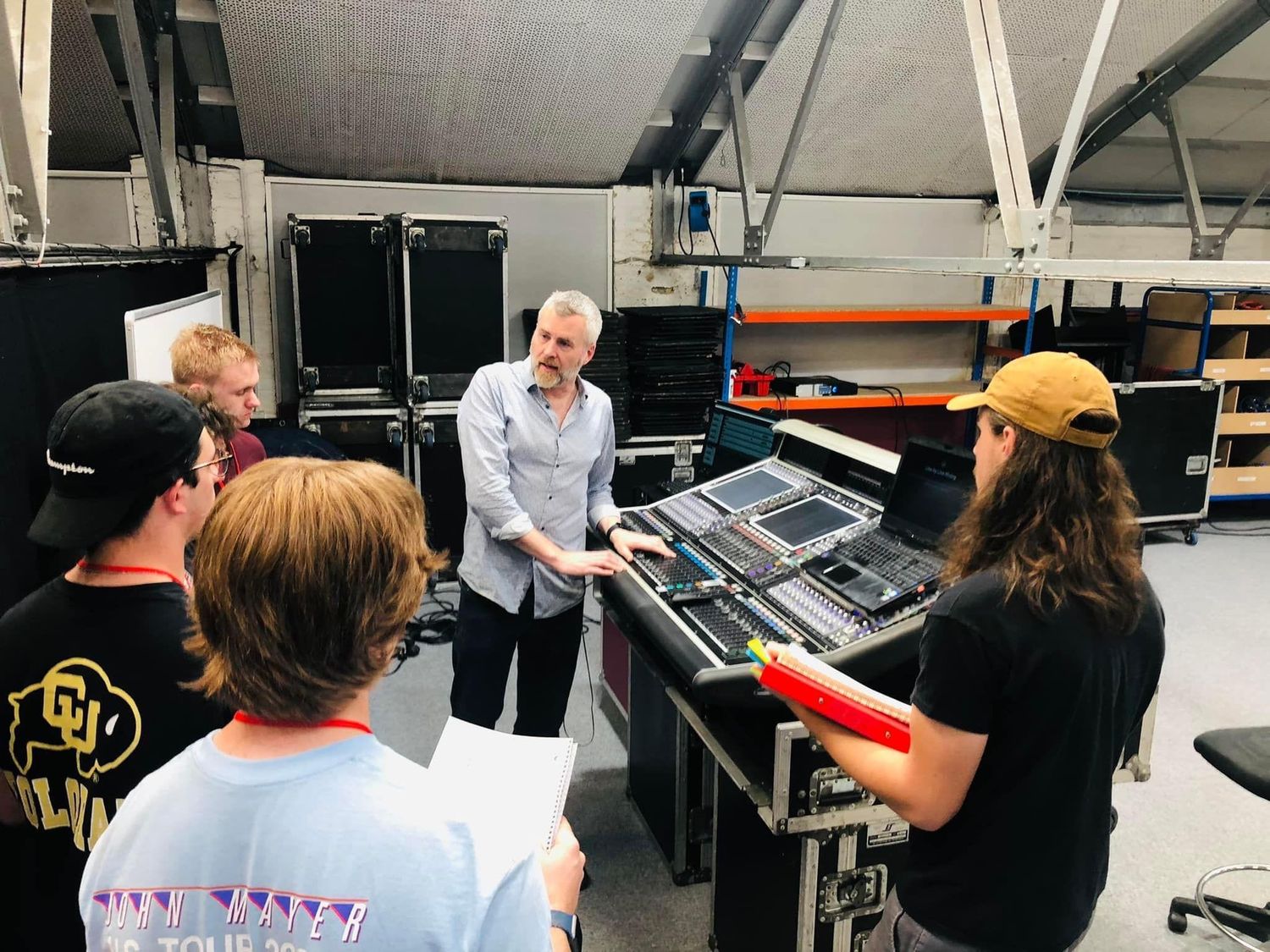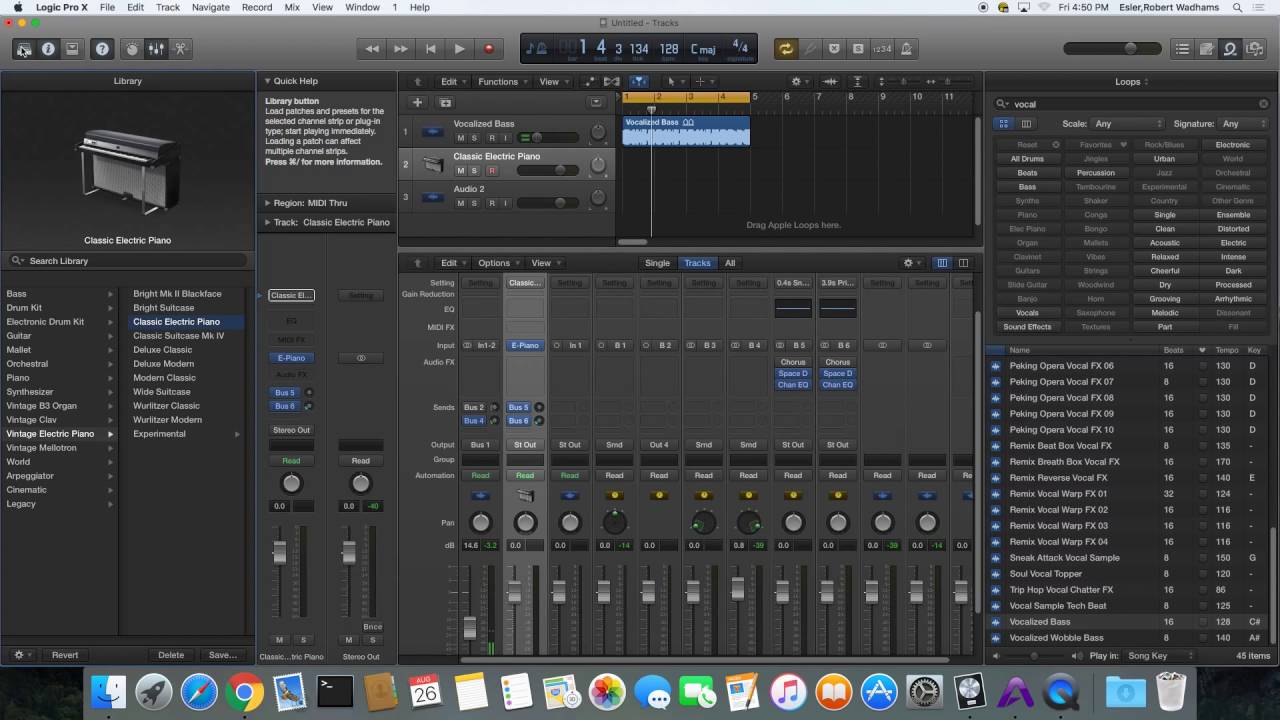Home>Production & Technology>Sound Engineer>How Does A Sound Engineer Fix Bass Problems With Tracks Controlled By Vocals


Sound Engineer
How Does A Sound Engineer Fix Bass Problems With Tracks Controlled By Vocals
Published: March 7, 2024
Learn how a skilled sound engineer resolves bass issues in tracks dominated by vocals. Discover effective techniques for sound engineers.
(Many of the links in this article redirect to a specific reviewed product. Your purchase of these products through affiliate links helps to generate commission for AudioLover.com, at no extra cost. Learn more)
Table of Contents
Introduction
Sound engineering is a delicate art that involves a deep understanding of audio frequencies, dynamics, and the intricate interplay between different elements of a musical composition. One of the most common challenges faced by sound engineers is the need to fix bass problems in tracks that are controlled by vocals. When the bass frequencies clash with the vocals, it can result in a muddy or boomy sound, obscuring the clarity and impact of the vocals. This can significantly detract from the overall quality of the music and diminish the listener's experience.
In the realm of sound engineering, addressing bass problems while ensuring that the vocals remain clear and prominent requires a combination of technical expertise and creative problem-solving. Sound engineers must employ a range of techniques and tools to effectively manage the bass frequencies and vocals, allowing each element to shine without overshadowing the other.
In this article, we will delve into the intricacies of fixing bass problems in tracks controlled by vocals, exploring the underlying causes of these issues and the techniques employed by sound engineers to rectify them. By gaining insight into the methods used to address these challenges, both aspiring sound engineers and music enthusiasts can develop a deeper appreciation for the meticulous craftsmanship involved in creating a balanced and impactful audio mix.
Throughout this exploration, we will uncover the nuances of utilizing equalization (EQ) to separate bass and vocals, as well as the application of sidechain compression to achieve a harmonious coexistence between these fundamental elements of a musical composition. By understanding the intricacies of these techniques, readers will gain a newfound appreciation for the artistry and technical prowess required to navigate the complex landscape of sound engineering.
Join us on this journey as we unravel the mysteries of sound engineering and discover the innovative methods employed to fix bass problems in tracks controlled by vocals. Through this exploration, we aim to shed light on the intricate processes that underpin the creation of captivating and sonically rich musical experiences.
Understanding the Bass Problems
The bass frequencies in a musical composition play a pivotal role in establishing the foundation and groove of a track. However, when these frequencies clash with the vocals, it can lead to a range of issues that compromise the overall sonic integrity of the mix. Understanding the specific challenges posed by bass problems in tracks controlled by vocals is essential for sound engineers seeking to deliver a polished and immersive listening experience.
One of the primary issues associated with bass problems in such tracks is the potential for muddiness and lack of clarity. When the bass frequencies overlap with the vocal range, it can result in a congested and indistinct sound, making it difficult for the vocals to cut through the mix with precision and impact. This can detract from the intelligibility of the lyrics and diminish the emotional resonance of the vocal performance, ultimately diluting the communicative power of the music.
Furthermore, the presence of excessive bass energy can lead to a boomy or overpowering sonic character, overshadowing the nuances of the vocal delivery and disrupting the overall balance of the mix. This imbalance can detract from the cohesion and coherence of the musical arrangement, hindering the listener's ability to fully engage with the expressive elements of the composition.
In addition to these challenges, the interaction between the bass and vocals can also impact the dynamic range of the mix. Without proper management, the coexistence of these elements may lead to inconsistencies in the perceived loudness and impact of the music, diminishing the overall sonic impact and emotional resonance of the composition.
By recognizing the multifaceted nature of bass problems in tracks controlled by vocals, sound engineers can appreciate the complexity of the task at hand. Addressing these challenges requires a nuanced understanding of audio frequencies, psychoacoustics, and the interplay between different sonic elements. Through a comprehensive understanding of these issues, sound engineers can effectively devise and implement strategies to rectify bass problems while preserving the clarity, presence, and emotive power of the vocals.
In the subsequent sections, we will explore the techniques and methodologies employed by sound engineers to tackle these bass-related challenges, shedding light on the innovative approaches that underpin the art and science of sound engineering. Through this exploration, readers will gain valuable insights into the meticulous processes involved in crafting a cohesive and impactful audio mix, where the bass and vocals coalesce harmoniously to elevate the sonic tapestry of the music.
Techniques for Fixing Bass Problems
Addressing bass problems in tracks controlled by vocals necessitates the application of specialized techniques and tools to achieve a balanced and cohesive audio mix. Sound engineers employ a range of innovative methodologies to rectify these challenges, ensuring that the bass frequencies and vocals coexist harmoniously without compromising the sonic integrity of the composition.
One of the fundamental techniques utilized to address bass problems involves the strategic application of equalization (EQ). By leveraging EQ, sound engineers can precisely sculpt the frequency response of the bass and vocals, effectively separating and delineating their respective sonic domains. This process involves identifying the critical frequency ranges of the bass and vocals and making targeted adjustments to attenuate any overlapping frequencies. By attenuating specific bass frequencies that clash with the vocals, engineers can mitigate muddiness and create a more defined sonic space for the vocals to occupy. This meticulous EQ sculpting allows the bass and vocals to complement each other, enhancing the clarity and impact of both elements within the mix.
In addition to EQ manipulation, sound engineers often employ sidechain compression as a powerful tool for managing the interaction between the bass and vocals. Sidechain compression enables engineers to dynamically control the level of the bass in response to the presence of vocals, thereby mitigating potential conflicts between these elements. By routing the vocal track as the sidechain input to the compressor inserted on the bass track, engineers can attenuate the bass signal whenever the vocals are present, creating a dynamic and responsive relationship between the two elements. This technique ensures that the vocals can take precedence in the mix, maintaining their prominence and clarity without being overshadowed by the bass frequencies. The judicious application of sidechain compression allows sound engineers to achieve a seamless and balanced coexistence between the bass and vocals, enhancing the overall impact and intelligibility of the musical arrangement.
Furthermore, sound engineers may utilize multiband compression to exert precise control over the dynamic range of the bass frequencies, ensuring that they remain consistent and well-defined without encroaching upon the vocal range. By employing multiband compression, engineers can target specific frequency bands within the bass spectrum, applying dynamic processing to maintain a balanced and controlled bass presence throughout the mix. This approach enables the preservation of the vocal clarity and articulation, as the bass frequencies are managed with precision and finesse, contributing to a cohesive and impactful sonic landscape.
Through the strategic application of these techniques, sound engineers can effectively address bass problems in tracks controlled by vocals, elevating the sonic quality and cohesiveness of the musical composition. By leveraging the power of EQ sculpting, sidechain compression, and multiband compression, engineers can navigate the intricate interplay between the bass and vocals, fostering a symbiotic relationship that enhances the expressive and emotive qualities of the music. These techniques exemplify the artistry and technical acumen inherent in sound engineering, showcasing the innovative approaches employed to create captivating and immersive audio experiences.
Using EQ to Separate Bass and Vocals
Utilizing equalization (EQ) to separate bass and vocals is a fundamental technique employed by sound engineers to address the intricate interplay between these critical elements of a musical composition. The strategic application of EQ allows engineers to sculpt the frequency response of the bass and vocals, effectively delineating their respective sonic domains and mitigating potential conflicts that may arise from overlapping frequencies.
The process of using EQ to separate bass and vocals begins with a meticulous analysis of the frequency spectra associated with each element. Sound engineers carefully identify the critical frequency ranges of the bass and vocals, recognizing the areas where potential clashes and masking effects may occur. By gaining a comprehensive understanding of the frequency characteristics of the bass and vocals, engineers can make informed decisions regarding the precise EQ adjustments required to achieve separation and clarity within the mix.
Once the critical frequency ranges have been identified, engineers can proceed to apply targeted EQ adjustments to attenuate any overlapping frequencies and create distinct sonic spaces for the bass and vocals. This involves the strategic use of frequency bands and filters to sculpt the tonal balance of each element, ensuring that they coexist harmoniously without encroaching upon each other's sonic territory.
In the context of the bass frequencies, engineers may focus on attenuating specific low-frequency bands that intersect with the vocal range, thereby reducing the potential for muddiness and masking effects. By carefully shaping the low-end response of the bass using EQ, engineers can create a more defined and controlled bass presence that complements the vocals without overpowering them.
Conversely, when addressing the vocals, engineers may employ EQ adjustments to enhance clarity and presence, allowing the vocal nuances and articulation to shine through amidst the surrounding instrumentation. By selectively boosting certain frequency bands associated with vocal intelligibility and warmth, engineers can ensure that the vocals maintain their prominence within the mix, effectively cutting through the sonic landscape with precision and impact.
Through the strategic application of EQ to separate bass and vocals, sound engineers can achieve a balanced and cohesive sonic mix that accentuates the expressive qualities of both elements. This meticulous EQ sculpting allows the bass and vocals to coalesce harmoniously, enhancing the overall clarity, impact, and emotive power of the musical composition. By leveraging the transformative capabilities of EQ, engineers can navigate the complex interplay between the bass and vocals, fostering a symbiotic relationship that elevates the sonic tapestry of the music.
Sidechain Compression for Bass and Vocals
Sidechain compression stands as a powerful and versatile tool in the sound engineer's arsenal, offering a dynamic approach to managing the interaction between the bass and vocals within a musical mix. This technique involves utilizing a compressor on the bass track, with the vocal track serving as the sidechain input to the compressor. By doing so, the level of the bass signal is dynamically controlled in response to the presence of vocals, allowing for a responsive and nuanced relationship between these fundamental elements of the composition.
The application of sidechain compression for bass and vocals offers a range of benefits, chief among them being the ability to ensure that the vocals maintain prominence and clarity within the mix. When the vocals are present, the sidechain compression attenuates the bass signal, creating sonic space and allowing the vocals to cut through with precision and impact. This dynamic control mechanism prevents the bass frequencies from overshadowing the vocals, preserving their emotive power and communicative clarity.
Furthermore, sidechain compression facilitates a cohesive and balanced coexistence between the bass and vocals, mitigating potential conflicts and masking effects that may arise from their overlapping frequency ranges. By dynamically adjusting the bass level in response to the vocals, sound engineers can achieve a seamless integration of these elements, fostering a symbiotic relationship that enhances the overall sonic integrity of the mix.
In practical terms, the sidechain compression process involves setting the compressor on the bass track to respond to the vocal input, typically through the use of a sidechain input or key input function. When the vocals are present, the compressor attenuates the bass signal, reducing its level to create sonic headroom for the vocals to shine. This ensures that the vocals remain clear and impactful, even in the presence of robust bass elements, contributing to a balanced and expressive mix.
The judicious application of sidechain compression for bass and vocals exemplifies the artistry and technical acumen inherent in sound engineering, showcasing the innovative approaches employed to create captivating and immersive audio experiences. By leveraging the dynamic control capabilities of sidechain compression, sound engineers can navigate the intricate interplay between the bass and vocals, fostering a harmonious coexistence that elevates the sonic tapestry of the music.
Conclusion
In the realm of sound engineering, the delicate balance between bass and vocals holds immense significance in shaping the sonic landscape of a musical composition. The intricate interplay between these fundamental elements necessitates a nuanced and strategic approach to ensure that they coexist harmoniously, enhancing the expressive qualities and emotive power of the music. As we have explored the techniques for fixing bass problems in tracks controlled by vocals, it becomes evident that sound engineers wield a diverse array of tools and methodologies to navigate these challenges with precision and artistry.
The application of equalization (EQ) to separate bass and vocals stands as a cornerstone technique in addressing the complexities of sonic interaction. By sculpting the frequency response of the bass and vocals, engineers can create distinct sonic spaces for each element, mitigating potential conflicts and enhancing the clarity and impact of the mix. The strategic use of EQ allows for a refined and balanced coexistence between the bass and vocals, fostering a symbiotic relationship that elevates the sonic tapestry of the music.
Furthermore, the utilization of sidechain compression for bass and vocals exemplifies the dynamic and responsive nature of sound engineering. This technique enables engineers to dynamically control the level of the bass in response to the presence of vocals, ensuring that the vocals maintain prominence and clarity within the mix. The judicious application of sidechain compression fosters a cohesive and balanced coexistence between the bass and vocals, mitigating potential conflicts and enhancing the overall sonic integrity of the composition.
In conclusion, the art and science of sound engineering are intricately woven into the fabric of every musical composition, shaping its sonic identity and emotive impact. By delving into the innovative techniques employed to fix bass problems in tracks controlled by vocals, we gain a deeper appreciation for the meticulous craftsmanship and technical acumen that underpin the creation of captivating and immersive audio experiences. Through the strategic application of EQ sculpting, sidechain compression, and a myriad of other tools and methodologies, sound engineers continue to push the boundaries of sonic innovation, ensuring that the bass and vocals coalesce harmoniously to elevate the expressive and emotive qualities of the music.











